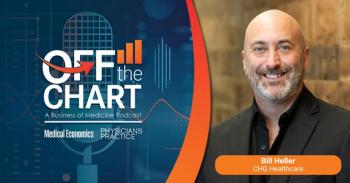
Kem Tolliver on the importance of patient engagement
Kem Tolliver, CEO of Medical Revenue Cycle Specialists, discusses patient engagement and what she gleaned from the MGMA Leaders Conference 2025.
Physicians Practice
What do you see as the most pressing issues facing primary care practices right now, and how do they differ across specialties like family medicine, pediatrics, and urgent care?
Kem Tolliver
Well, I think some of the most pressing issues are going to be patient engagement and technology adoption. Part of the reason why I see patient engagement as such a challenge is because we are dealing with different patient populations and different needs within our patient populations. So, when we're dealing with patients who have social determinants of health, being able to connect with them is—you know—we have to use a very unique approach for that patient population.
Gen X—I’m, you know, I’m a Gen X—and there’s a different way that I would like to be connected with my providers. I am more on the go, I’m technology-savvy, and I want to be able to access a patient portal. And then we have other generations who are on social media, and we want to definitely adopt social media as that platform where we connect with our patients.
One of the reasons why patient engagement is such a critical point that we need to prioritize is because we need to keep our patients in care. We need that to keep them adherent to any care plans that have been developed for them. We need to make sure that they have financial literacy when it comes to their care. So I think that is one of the areas that we really discussed in my session.
But then also, looking at what is important to healthcare organizations today—it’s patient engagement. One of the ways that we can deal with patient engagement is finding unique ways to communicate with our patients and, again, speaking to them where they stand. Where are our patients? What do they need from us? How do they want to communicate with us? So, being able to adapt to their specific needs, I think, is a very important priority for primary care, right?
Physicians Practice
Could you highlight any practical strategies that have proven effective in helping primary care groups navigate financial or operational challenges?
Kem Tolliver
You know, one of the strategies is technology adoption. When we think about our financial health, we think about all of the complexities with payer reimbursement guidelines and changing policies. Today is September 30—it is the cutoff time for the telehealth waiver, right? So, we have to be nimble, and we have to be able to pivot when these changes are occurring—and, more importantly, prior to these changes occurring—and know that these changes are coming down the road.
So what does that include? It includes staying up to date with these changes. We have to have credible sources, right? Once we've identified that a change is coming down the road, how do we adapt to that in our practices? A large part of that adaptation is adoption of technology. In revenue cycle management, we try to do everything that we can to automate manual workflows—making sure that our staff are being used to the top of their skill sets. Those are some of the things that I think are really important for us in terms of strategies that can help our financial health.
Physicians Practice
All right, so why is it important for practice leaders to compare strategies across organizations of similar size and ownership structures?
Kem Tolliver
Oh my gosh, because we are doing incredible work in our organizations, and it's so important that we share the strategies that have worked for us and the strategies that have not worked for us—the trends that we're seeing in our organizations and our region—so that we can prepare our colleagues for those trends that might impact them.
In Maryland, we have a total cost of care model, and that model is really unique in a value-based payment environment. Sharing that with other state colleagues is so important because they can start thinking about, when this comes to their region, how they’ll be ready to adopt it. So really, just sharing those wins, those misses, the complexities.
We see a ton of payers who are now automatically downcoding CPT codes, so being able to share those strategies of how you overcame that in your state is really important. For a conference like this, it’s a great opportunity to network. When I have challenges or obstacles in a specific specialty, guess what? I have a “Rolodex” of folks in certain specialties that I can call upon to get their expertise.
So being able to share information with one another, and making sure that we have a credible network we can rely on—because, you know, we’re not alone in this. We have so many opportunities to work together to solve these solutions.
Physicians Practice
All right. So, you know, talking about coming together—we’re here at the big, you know, the big conference of the year. When these leaders come together to discuss their challenges, what types of resources tend to make the biggest difference?
Kem Tolliver
Oh my gosh, I’ll be honest—for me, the operational resources, the practical resources. We have so many opportunities to discuss those practical resources. One of the practical resources that I like to discuss is rule engines. When you have a revenue cycle team working AR, working denials—I was sitting with a colleague, and they explained to me some of the rule engines that they’re using in a particular software, and that was something that I could immediately take back to my group and say, “Hey, let’s see if we can program this in our technology.”
But I think the other really important component here is the information that we’re getting from the speakers. There’s a lot of motivation at a conference like this, and it’s so important to remember that there’s hope—that we’re in this for a reason, that we’re still passionate about it. Getting our cups filled at a conference like this, I think, is so refreshing. You go back to your organization, you’re on fire, you’re ready to go.
So, yeah, getting that motivation and inspiration, I think, is super helpful. But also being around people who know what you’re dealing with—being around people who are struggling with the same challenges you’re facing but who are also passionate about patient care and their communities—it’s just a win.
Physicians Practice
So beyond the exchange of solutions, how does peer networking at events like this help primary care leaders strengthen their organizations?
Kem Tolliver
So, you know, when we think about technology—for example, technology adoption—it is very specialty-specific because each specialty has a clinical workflow. So, when primary care comes together, when urgent care comes together, we talk about how a specific technology has improved our specialty workflows.
And then, being able to speak with folks who are in your same region—that’s also helpful because you get to see, hey, this is how we adopted generative AI or electronic transcription or automated transcription to improve our documentation. So I really think having that opportunity to get specialty-specific, region-specific tools is going to be super helpful.
Physicians Practice
So you had your session yesterday. If participants left with one lesson, what do you hope it was about leading and sustaining success?
Kem Tolliver
So, my session was sponsored by Humana—and this isn’t a plug for Humana; they don’t know that I’m even mentioning them here. They don’t have anything to do with this conversation. However, what I did appreciate in the session was their transparency and their vulnerability for even being here.
One thing that I would like folks to take away from that session is to really try to understand the “why.” We have, you know, this type of relationship sometimes with our payers which, you know, when we look at the downstream impact of some of the guidelines that come out of our payers, it’s frustrating, right? That’s putting it mildly—it’s frustrating.
However, we did get some context from Humana as to why they make certain changes, why they adopt certain rules—not that we agree with those rules—but understanding the “why.” Getting the context, I think, is really helpful because it allows us to be proactive in how we solve those challenges in our reimbursement and in our patient care.
So, my suggestion is: get to the “why,” understand the “why,” so that the solutions you put in place to overcome that obstacle are going to be sustainable. I’m the type of person that wants detail. I want to understand so that I can make an informed decision, so I can educate my staff appropriately, my providers appropriately.
And yes, there is frustration; however, frustration doesn’t lead to a solution, right? What we need to do as leaders is understand the “why” so that we can create solutions.
Physicians Practice
So what’s one tip you would give to practice leaders today?
Kem Tolliver
Ooh, one tip that I would give to practice leaders today is: stay inspired. I know that we’re all in different phases of our careers, that our practices are on different journeys. However, our providers look up to us—believe me, they do look up to us.
So, stay inspired because there are going to be moments during the day that become pretty stressful. There are going to be periods of time where it may feel like we don’t have control over certain outcomes. But stay inspired. Whatever inspires you, lean on that—lean into it—because we are doing great work. We are shaping the future of healthcare. So, the tip that I would give is: stay inspired, be true to yourself, and leave a legacy for your organization.
Newsletter
Optimize your practice with the Physicians Practice newsletter, offering management pearls, leadership tips, and business strategies tailored for practice administrators and physicians of any specialty.








